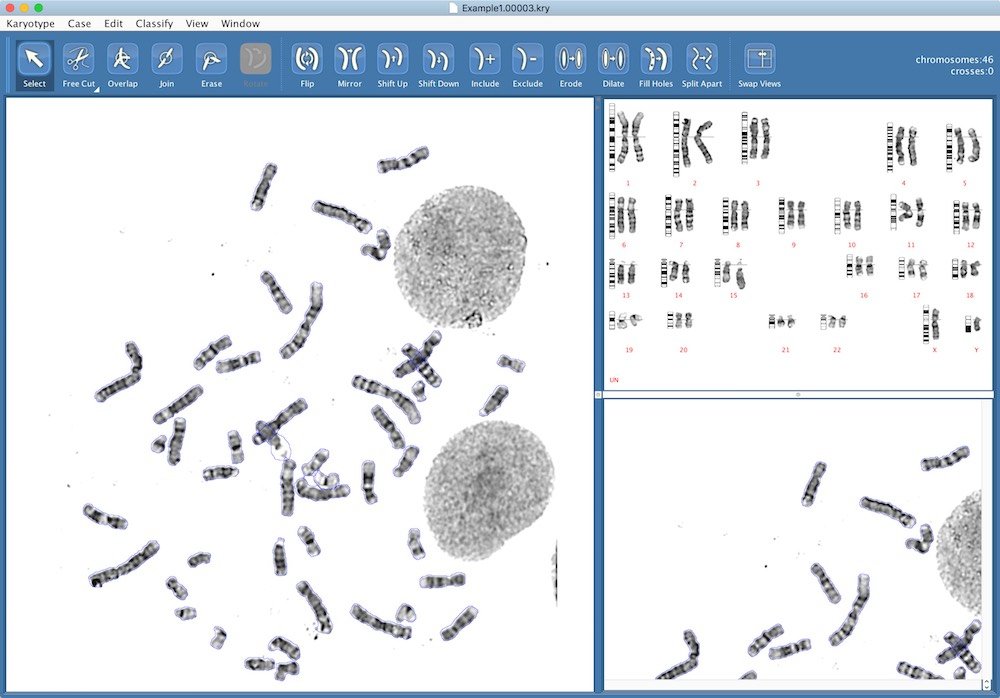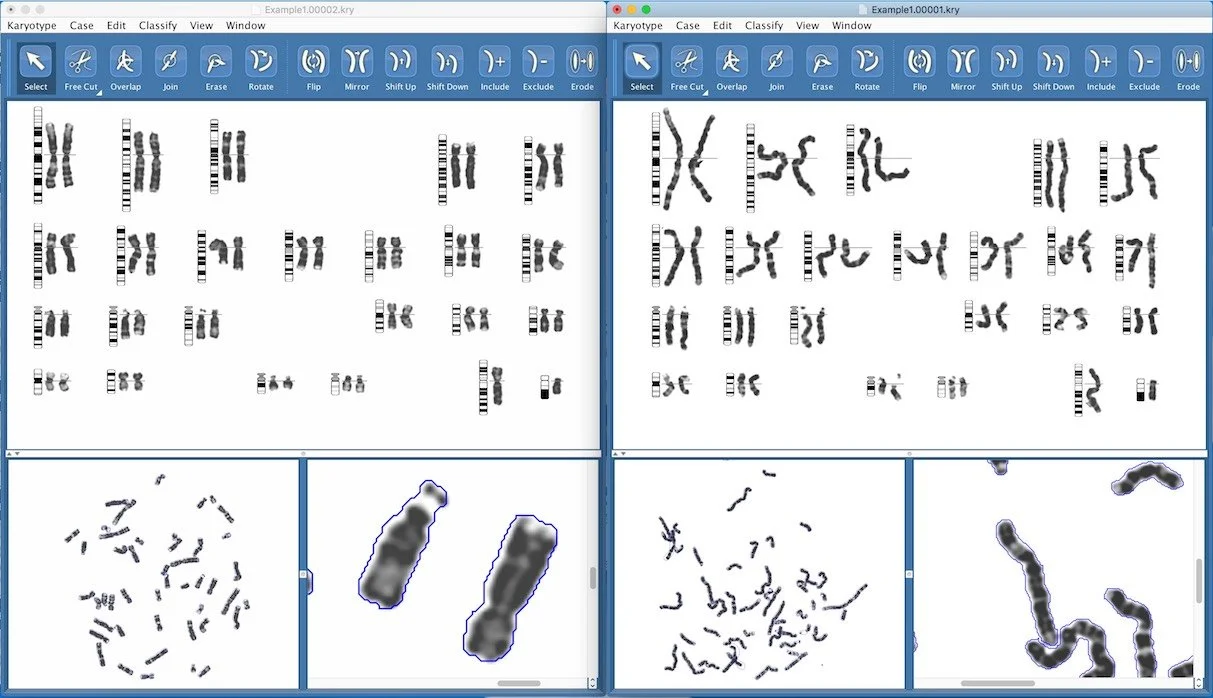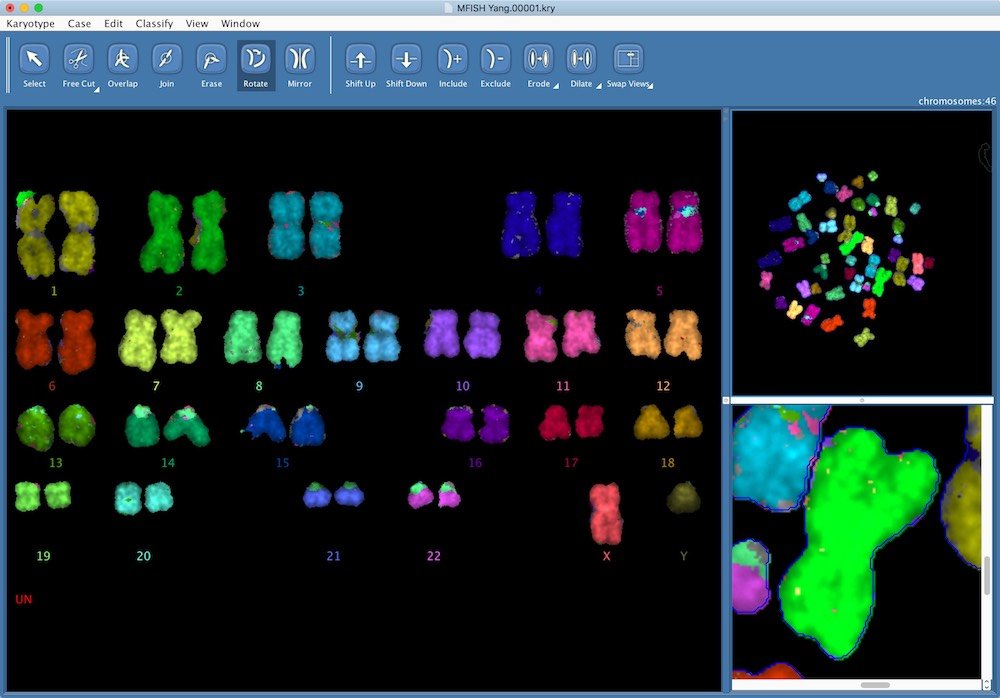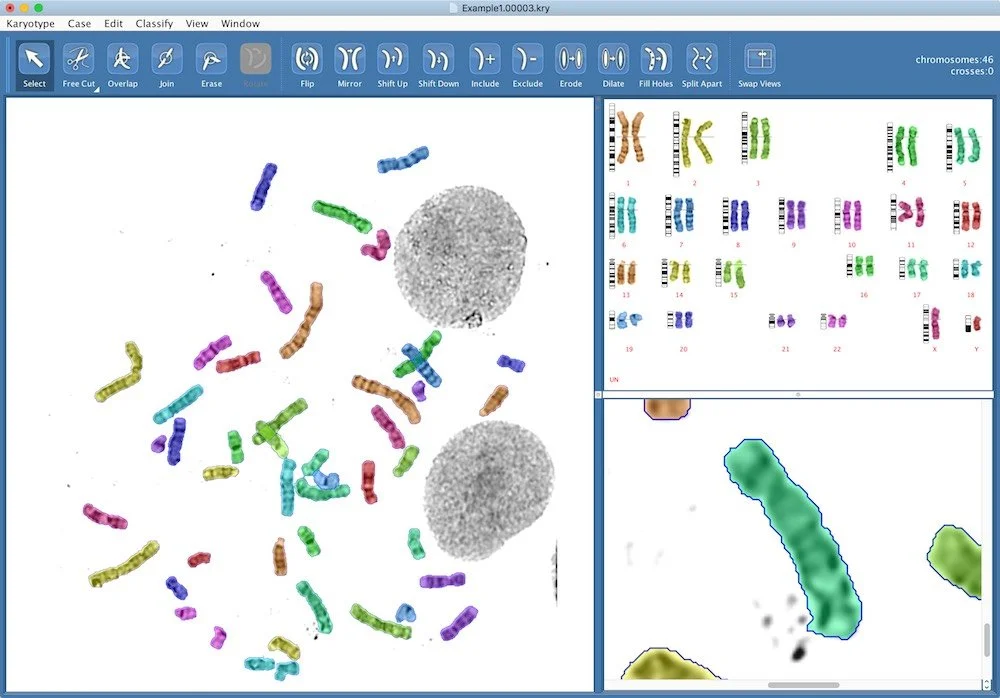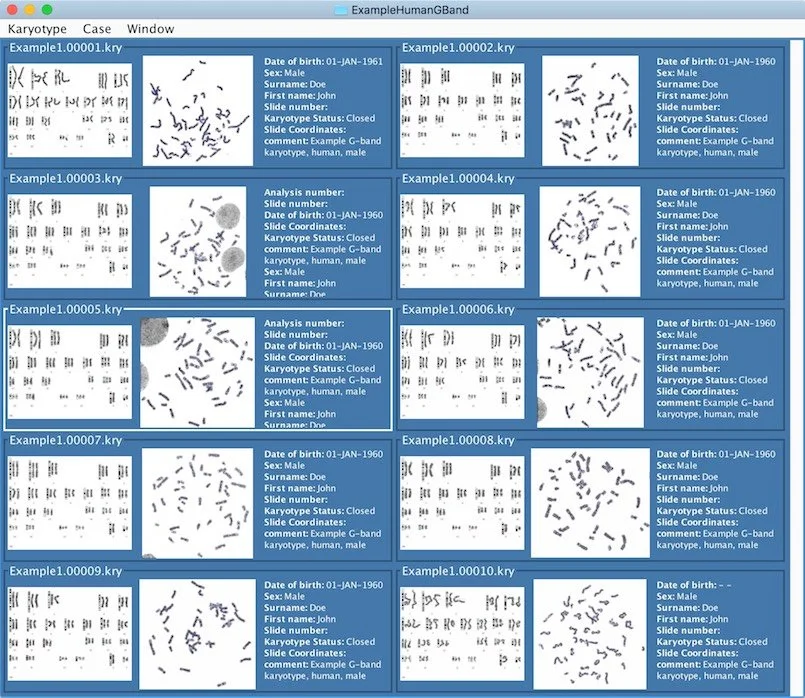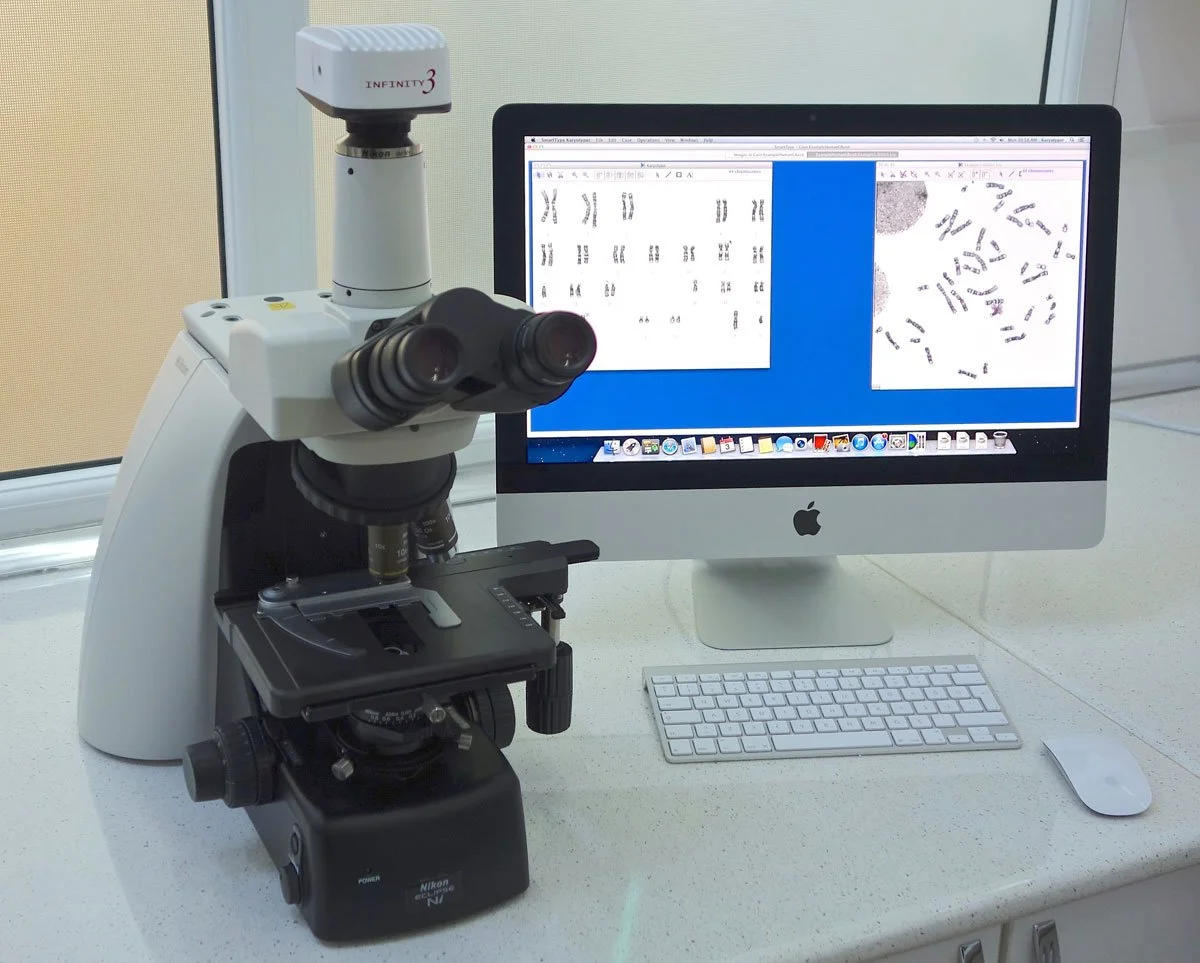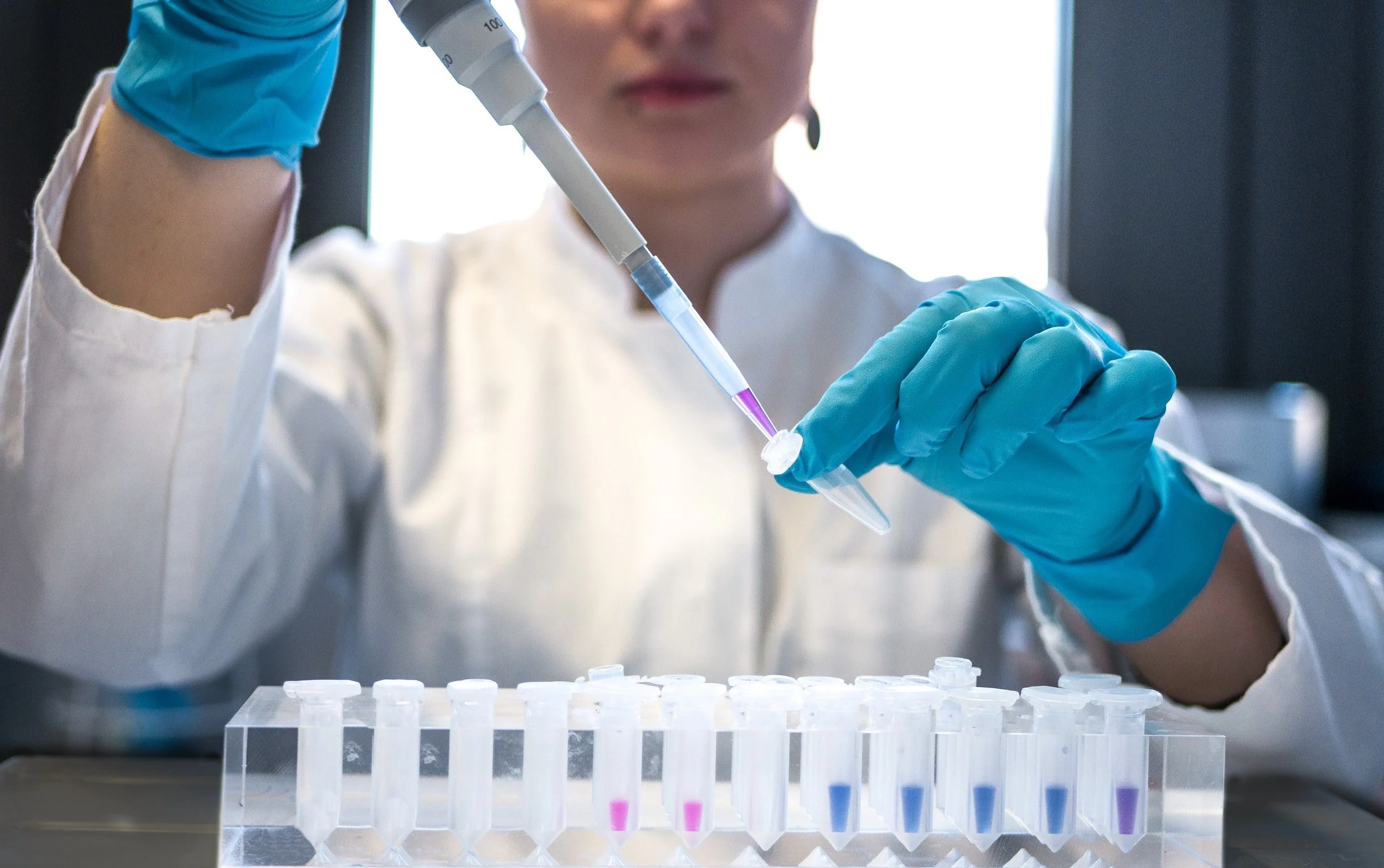Email us and request a free 14 day trial!
New Built-In Capture for Basler, Motic and Hamamatsu Cameras
Email us and request a free 14 day trial! New Built-In Capture for Basler, Motic and Hamamatsu Cameras
SmartType
The Smarter Way to Karyotype
SmartType can work with any microscope and any camera
Just import metaphase images into SmartType to start karyotyping.
Now with built-in capture for Basler, Motic and Hamamatsu cameras!
Features
SmartType is a powerful simple-to-use karyotyping system for routine diagnostic or research use. SmartType provides ergonomically efficient tools to simplify the editing process even for metaphases exhibiting poor morphology as often seen with leukemic samples. Powerful trainable classifiers automate much of the classification process with any final corrections being made with a simple drag-and-drop.
SmartType can be used with any microscope and any camera capable of capturing and saving images of metaphases. The intuitive user interface and excellent use of the available screen space makes karyotyping a breeze even if you are working on a smaller screen such as a laptop. As of 2025, SmartCapture supports built-in capture with Basler, Motic or Hamamastu cameras.
Interactive tools that can be tailored whilst being used to work the way you do.
Chromosome tints for easy chromosome identification.
Interactive composite table view with drag-and-drop reclassification.
Multiple karyotypes open side-by-side for easy comparison.
Multiple species support.
Extensible patient data and flexible report generation.
G, R, Q & Dapi banding classifiers.
Fluorescence, FISH and MFISH.
Trainable classifiers.
Stitch multiple images to extend the field of view.
Multi-step Undo.
Runs on PC Windows and Apple OS-X.
Fully networkable.
Editing Tools
SmartType’s editing tools make light work of creating a karyotype. SmartType tools automatically separate touching and overlapping chromosomes. For difficult to separate overlaps and clusters, manual editing tools have been ergonomically designed to get the job done with the minimum of fuss. Colourful highlighting is used to keep the user informed of his exact stage in the editing process. There are tools to separate clusters, resolve overlaps, extend boundaries, join parts, fill holes, erode, and dilate. Novice or expert, it’s reassuring to know that SmartType allows you multiple undo steps. Even after saving, the karyotype can always be re-opened for editing.
Click image to play video
Classifiers & Layouts
SmartType automatically classifies chromosomes according to their size and or morphology. Any misclassified chromosomes are easily corrected with drag-and-drop.
SmartType uses a trainable classifier. This means we can teach it to recognise a new species by presenting it with karyotypes that have been correctly manually classified with SmartType. In this way, if an automatic classifier for the species you are working on is not already part of SmartType, we can create one for you from karyotypes that you have created manually using SmartType.
SmartType supports multiple species: human, bird, cattle, dog, horse, mouse, pig, and zebrafish.
Click image to play video
Workflow
SmartType is designed to integrate with laboratory workflow. Karyotypes are organised into cases with associated user-defined case information such as patient details, and comments. Each new karyotype can inherit information from the case details avoiding tedious re-entry of patient information.
Print reports can be generated and customised for your specific laboratory requirements.
Case View organises karyotypes into a cases
Species Support
SmartType supports a variety of different species. Each species can have a layout, ideograms, and classifiers.
SmartType currently supports the following species:
Human: layout, ideograms, auto-classifiers
Bird: layout, no ideograms, classify by size
Cattle: layout, ideograms, classify by size
Dog: layout, ideograms, classify by size
Horse: layout, ideograms, classify by size
Mouse: layout, ideograms, classify by size
Pig: layout, ideograms, auto-classifier
Zebrafish: layout, ideograms, classify by size
Porcine layout
Hardware
SmartType runs on any modern Windows, Linux or Apple computer. We recommend a minimum of 16GB of memory and a display of at least 1080p resolution.
As of 2025, SmartType supports image capture with Basler, Motic and Hamamatsu cameras.
You can also use any camera and microscope capable of capturing metaphase images. Just save the images as JPEG, PNG or TIFF files and import them into SmartType.
SmartType works with any microscope and camera

SmartType is used in clinics and hospitals around the world
Clients
Great Ormond Street Hospital & Institute of Child Health (London, UK)
Texas Children's Cancer Center, Dept. of Pediatrics, (Houston, USA)
The University of Sheffield (Sheffield, UK) (Educational Use)
Kuster Research Porcine Fertility Studies (Illinois, USA)
Universidad Nacional de San Luis (Argentina)
GerMedTech Clinical Use (Odessa, Ukraine)
Afgen (Azerbaijan)
Neoscreen E.P.E. (Athens, Greece)
Cefegen (Madrid, Spain)
Sanger Centre (Cambridge, UK)
University of Kent (Canterbury, UK)
University of Birmingham - BioSciences) (Birmingham, UK)
University of Birmingham - Inst. of Biomedical Research (Birmingham, UK)
Chrombios (Berlin, Germany)
Genus, Wisconsin, USA
Florida International University (Miami, USA)
Unithon CA (Maracaibo, Venezuela)
Institute of Basic Medical Sciences (Beijing, China)
Dubai Equine Hospital (Dubai, UAE)
Monash University (Clayton, Australia)
Curtin University (Bentley, Australia)
Ontario Veterinary College (Guelph, Canada)
International Inst Molecular & Cell Biology (Warsaw, Poland)


